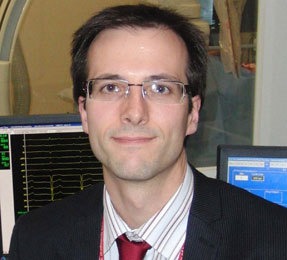
By Will Nicolson
Two new articles, published online in the Journal of Pediatrics (Hill et al) and Circulation (Uberoi et al), offer, respectively fresh evidence of the difficulties of and practical guidance on the interpretation of preparticipation ECGs in young athletes.
The Italian experience is often quoted in the context of preparticipation screening: an 89% reduction in the annual incidence of sudden cardiac death in athletes participating in organised competitive events was seen following a law mandating annual general physical examination, 12-lead ECG, and submaximal exercise test. However this study was a population-based observational report, the reduction to 0.4 deaths per 100,000 person-years is comparable to the 0.44 sudden deaths per 100,000 person-years reported for high school and college athletes in the USA from 1983 to 1993. Also, it did not assess the added value of the 12-lead ECG to the American Heart Association recommendation of a thorough history and physical exam every two years.
The new study in the Journal of Pediatrics adds to our understanding of the difficulties of interpreting preparticipation ECGs. Surprisingly electrophysiologists did not perform significantly better than other participants; particularly given the 100% concordance of the research institution’s paediatric electrophysiologists. Also of interest is that computer-derived interpretations were not significantly worse, although perhaps the study was insufficiently powered to assess either of these points. The normal ECGs included some common findings in athletic hearts: sinus arrhythmia, low atrial rhythm, and sinus bradycardia. A preparticipation screening programme would face more difficult normal ECGs relating to age, sex, ethnicity, sport, and level of training such as differentiating exercise-induced increased QRS voltage from hypertrophic cardiomyopathy. The prevalence effect, a phenomenon in which people commonly miss rare things on visual searches, also adds to the dilemma of screening a large normal population.
The special report in Circulation offers an excellent practical review of the interpretation of the electrocardiogram of young athletes. It also presents data on screening of 658 athletes by the authors and 1,005 athletes by a European Society of Cardiology (ESC) expert group; respectively 10% and 40% were initially classified as abnormal but re-analysis following new ESC recommendations reduced abnormal classification to 4% and 11%. This extensive improvement in classification of ECGs would have corresponded to a substantial reduction in unnecessary investigations and anxiety for these patients, but at best still leads to further investigation of one in 20 athletes. As this report states: “A major limitation in this field is the absence of good data on the validity of specific ECG criteria.”
All of this highlights the difficulties for the non-expert in keeping up-to-date with, interpreting and minimising investigation of preparticipation ECGs, in what is a relatively infrequent clinical presentation. If preparticipation ECG screening were introduced, extensive thought would need to be given to minimising the potential for high economic and emotional costs in addition to high rates of inappropriate inclusion and exclusion from sport.
It is possible that preparticipation ECG screening would cause more long-term deaths through inactivity than it saved through appropriate diagnosis in the short term.
Will Nicolson is a clinical research fellow at the Department of Cardiovascular Sciences at the University of Leicester, UK.












